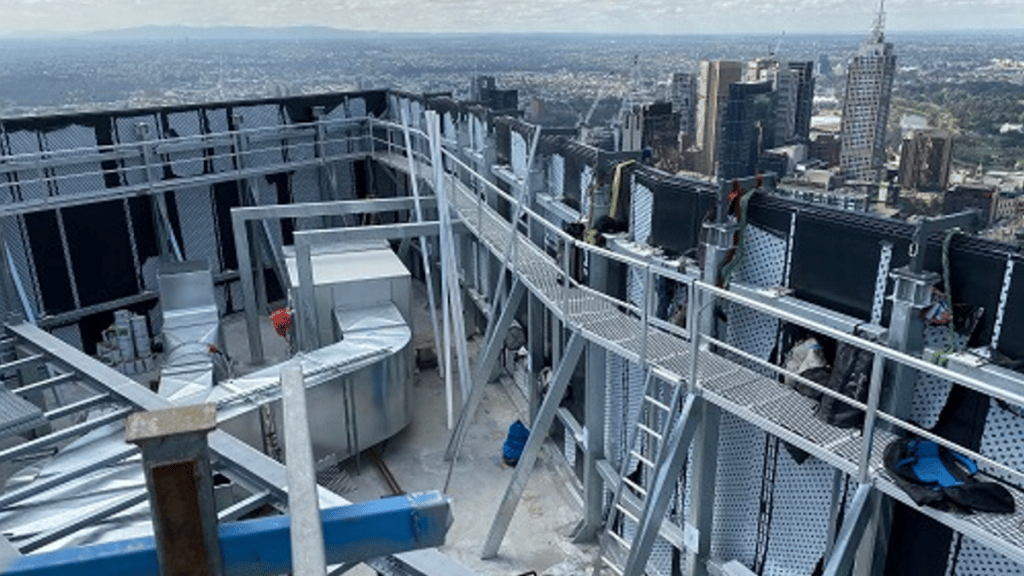One of the challenges for building managers is how to keep employees and workers safe at work. There are many aspects to consider, and in this article, we’ll discuss how to ensure safety with a few pointers. The article isn’t comprehensive, but it lays a foundation for all there is to manage, from roof anchor points to boilers.
On the Roof
We start at the top of the building. There are several aspects of the roof to consider for labourers that work on the outside of building, doing maintenance and repairs, or even doing reconstruction work.
Roof Anchor Points
Firstly, consider roof anchor points. They are points to which you will attach items that go down the outside of the building, such as ladders or ropes. You also use them as part of fall/height PPE, because workers can attach harnesses to them. For all these uses, they obviously need to be installed correctly to ensure they can take a considerable amount of weight.
Roof Ladders
Roof ladders need to be situated in convenient locations. They are going to function as stairs, and therefore must be fixed in place, rather than loose. They have to be custom-made for each area.
Roof Walkways
Roof walkways give workmen the opportunity to walk on the roof without causing wear and tear on the roof. Also, they lift the worker off the roof, and enable them to walk freely over the roof area, without tripping over beams or equipment.
Roof Platforms
Roof platforms do the same thing as roof walkways, except that they are bigger. They enable the worker to safely work at heights.
Roof Access Hatches
A roof access hatch is the entrance onto the roof from the building. Installing ones that work safely and efficiently are important. They must comply with Australian standards.
You can even get ones that are insulated.
Clothing
It’s vital that your workers have proper high visibility clothing and safety equipment. Hi-vis vests, gloves, boots, helmets and safety harnesses should never be an option—rather the rule. Sometimes workers can get into bad habits, such as not using gloves or hats. So, enforce the rules to make sure they wear what they’re supposed to.
Outside the Façade of the Building
You will need safe platforms and hoists from which to work, with quality weightbearing lines and safety rails around the platform. There will be safety-harness anchor points, and a solid base which doesn’t rot or wear.
Inside the Building
Next, you must keep the inside of the building safe. There are many points you’ll need to consider as you work your way around the building, and some of the most important are listed below.
Floors and Passageways
Make sure that all cleaners and workmen know to mop up spills immediately, and to place signage where they are cleaning. Carpets must be flat, and not have edges that are lifting, because it can cause tripping.
You must ensure the entire crew knows to keep passageways clear at all times. It’s not acceptable to move a piece of furniture into a passage temporarily. This can block the free flow of movement of staff, and potentially create a barrier in an emergency exit path.
Electrical Wiring
Make sure all wiring is covered, and hasn’t, for instance, been eaten away by rats. A short can cause a fire, so it’s best to inspect the wiring often. You also want to make sure no exposed wiring is open to water leaks, because again that could cause a short in the system.
Computer Terminals
Make sure any computer’s hardware case is tucked safely under a desk and not where it could get in harm’s way. Also make sure that electrical points are functional and not placed in multi-plug units, where it could draw too much energy.
Lighting
The lighting in your building should illuminate passageways and rooms brightly, so that no one trips over anything, and can find their way out in an emergency.
Fire Doors
Fire doors must never be blocked or left propped open. Staff must be educated about this, and you need people on each floor who will enforce this. Keep checking on them to make sure they function well.
Kettles and Other Kitchen Equipment
Inspect kettles and other kitchen equipment and wires for signs of wear and tear, and have staff ensure they’re not left in a puddle of water.
Warning Signs and Exit Signs
Go around the building often to ascertain that all necessary signs are present. Where relevant they must be lit up and all lights in working condition. Exit signs must be clearly marked, and never obscured by something. Warning signs about items such as chemicals must be in place.
Check for vandalism of signs on a semi-regular basis. Make sure that staff make correct use of movable warning signs relating to cleaning and wet floors.
Geysers and Boilers
Check geysers and boilers to establish there are no leaks, because neglecting this could actually lead to one exploding.
Final Thoughts
You can never really be too safe when it comes to keeping employees and contractors safe at work. Providing all the equipment, tools and procedures necessary for safety is simply a job well done.


